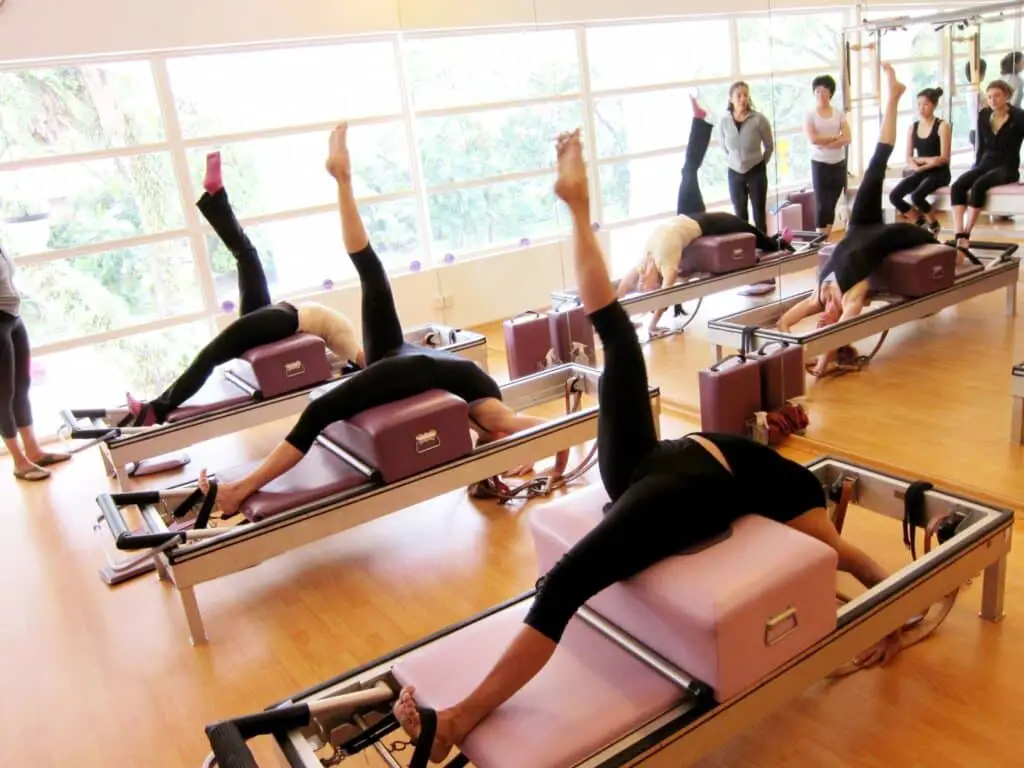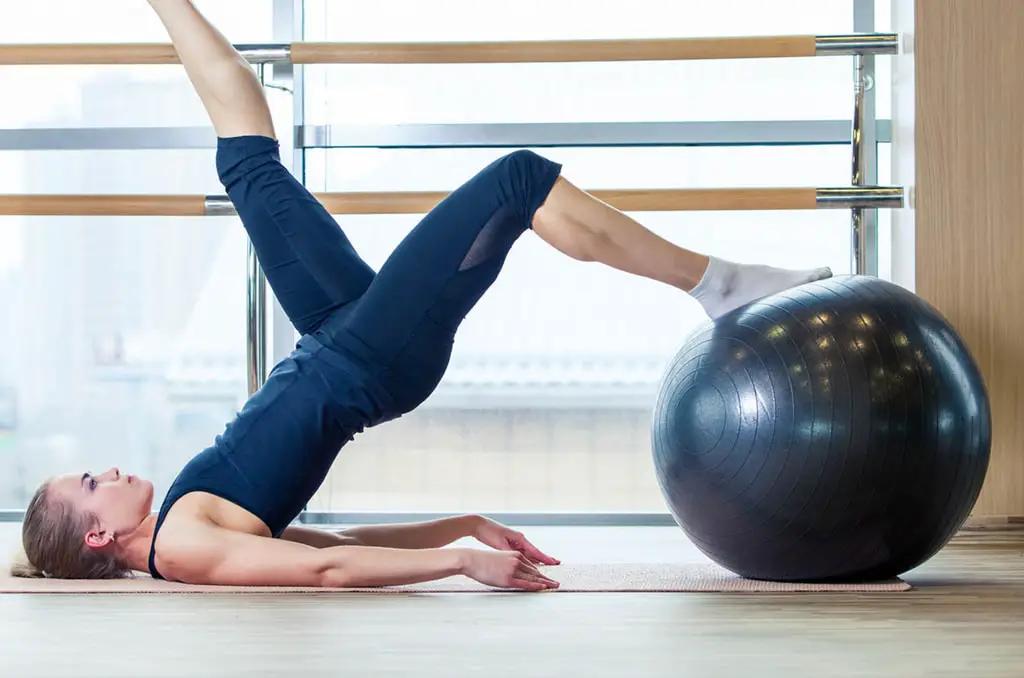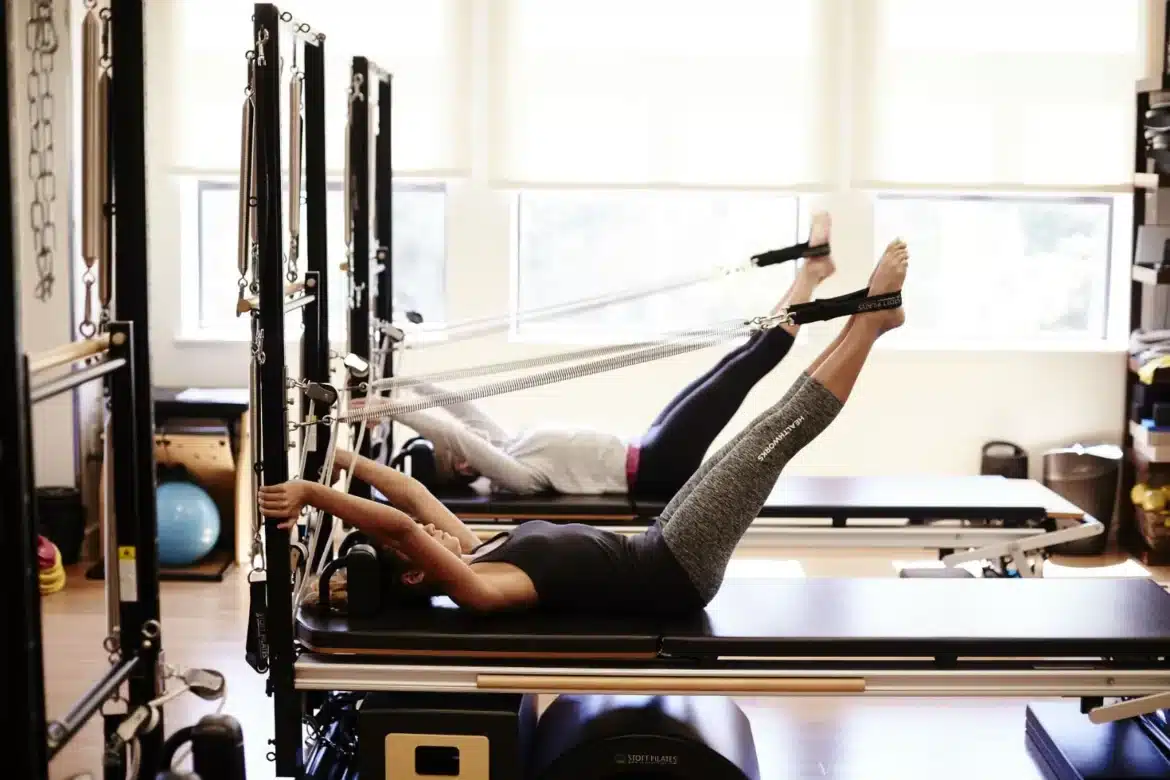Introduction
Why Is Pilates So Expensive: Pilates, a popular form of exercise known for its emphasis on core strength, flexibility, and overall body conditioning, has gained a reputation for being relatively expensive compared to other fitness options. While the benefits of Pilates are well-documented and appreciated by many, the cost associated with practicing this exercise method can be a barrier for some individuals. In this exploration, we will delve into the factors that contribute to the perceived high cost of Pilates, shedding light on the various elements that make it an investment in both physical and financial terms. By understanding why Pilates is often considered expensive, we can gain insight into the factors that influence its pricing, and ultimately, make more informed decisions about our fitness choices.
One of the primary reasons for the cost of Pilates build is the need for highly trained and certified instructors. Pilates instructors undergo extensive training to understand the principles and techniques involved in this exercise method. Their expertise ensures that clients receive safe and effective instruction, but this expertise comes at a cost, which is reflected in the pricing of Pilates classes. Pilates often involves the use of specialized equipment like reformers, Cadillac machines, and barrels. These pieces of equipment are designed to enhance the effectiveness of the exercises and provide resistance. Maintaining and purchasing this equipment can be expensive, and these costs are passed on to clients.
Many Pilates studios maintain small class sizes to provide personalized attention to each client. Smaller classes mean fewer clients per session, which can result in higher session fees compared to larger group fitness classes. Running a Pilates studio entails costs such as rent, utilities, insurance, and equipment maintenance. These overhead expenses are factored into the price of classes or private sessions.

Are Pilates worth the money?
Scientific research does support an array of impressive health benefits for Pilates. Studies suggest it may help to improve muscle endurance and flexibility, reduce chronic pain and lessen anxiety and depression.
Health Benefits
Pilates offers a wide range of health benefits that can make it worth the money for many individuals. Some of these benefits include improved posture, enhanced flexibility, increased muscle strength, and better balance. Moreover, Pilates can help alleviate back pain, reduce stress, and enhance mental clarity. If you’re looking to invest in your long-term health and well-being, Pilates can be a valuable tool.
Personalized Training
Pilates is a highly adaptable form of exercise that can be tailored to suit individual needs and goals. Whether you’re a beginner or an advanced athlete, a skilled Pilates instructor can design a program that suits your fitness level and addresses your specific requirements. This personalized approach ensures that you get the most out of your Pilates sessions, making it a worthwhile investment in your fitness journey.
Low-Impact Nature
Unlike high-impact exercises that can be hard on joints and muscles, Pilates is a low-impact form of exercise. This makes it suitable for individuals of all ages and fitness levels, including those with physical limitations or injuries. If you’re concerned about preserving your joints and avoiding the risk of injury, Pilates is an excellent option to consider.
How can I make Pilates more affordable?
For instance, you could do a private class and take what you’ve learned there in a group class setting for a few weeks to make your overall Pilates cost cheaper. Or, you could combine reformer classes and some less expensive mat classes. You might even consider taking only mat classes for a while.
Choose Mat-Based Classes
Mat-based Pilates classes are typically more affordable than equipment-based classes held in studios. Mat Pilates requires minimal equipment and can often be practiced at home with just a yoga mat, making it a cost-effective option.
Online Classes and Apps
Many Pilates instructors and studios offer online classes and subscription-based apps that provide access to a variety of workouts at a lower cost than in-person classes. These options allow you to practice Pilates in the comfort of your home, often at your own pace.
Group Classes and Packages
Studios often offer package deals or discounted rates for purchasing classes in bulk. Consider buying a package of classes, which can significantly reduce the cost per session. Group classes are generally less expensive than private sessions as well.
Community Centers and Non-Profit Organizations
Check out local community centers, non-profit organizations, or recreational facilities that may offer affordable Pilates classes. These venues often provide low-cost fitness options to the community.
Try Donation-Based Classes
Some instructors and studios offer donation-based or pay-what-you-can classes. This allows you to contribute an amount that fits your budget while still benefiting from expert instruction.
Why do celebrities like Pilates?
QUICK RESULTS. Many pilates celebrities have shown that this workout is capable of giving quick and efficient results. This is also one of the major reasons why so many people opt for this form of workout. Celebrities often need to transform their bodies as per the demand of a role, often in just a matter of months.
Efficient Full-Body Workout
One of the primary reasons celebrities love Pilates is its ability to provide a comprehensive full-body workout. Pilates focuses on strengthening the core muscles while targeting other muscle groups as well. This means that in just one session, individuals can work on their strength, flexibility, posture, and balance. Celebrities often have busy schedules, making Pilates an efficient choice to get the most out of their workouts in a short amount of time.
Injury Prevention and Rehabilitation
Celebrities often need to maintain peak physical condition for their demanding roles, performances, or appearances. Pilates is a low-impact exercise method that helps prevent injuries and aids in rehabilitation. It can be particularly beneficial for those recovering from injuries or surgeries, as it allows them to rebuild strength and mobility without putting excessive strain on their bodies.
Enhanced Core Strength and Posture
A strong core is essential for both functional movement and a lean appearance. Pilates places a strong emphasis on developing core strength, which not only contributes to better posture but also helps individuals maintain a toned and sculpted physique. Celebrities appreciate how Pilates helps them look and feel their best on and off the red carpet.
Stress Reduction and Mental Well-Being
The demands of celebrity life can be overwhelming, leading to stress and anxiety. Pilates incorporates mindful breathing and concentration, promoting relaxation and mental clarity. This aspect of Pilates is highly valued by celebrities as it helps them manage the pressures of fame and maintain a healthy work-life balance.
Is yoga or Pilates cheaper?
Yoga is best for people facing severe stress, anxiety or depression as it may ease off and enhance the mind-body connection. Pilates memberships are much more expensive than yoga memberships due to the specialized machines used in Pilates.
Yoga
Minimal Equipment:Yoga requires very little equipment. A basic yoga mat is usually the only essential item, and these are relatively inexpensive. Most studios provide mats for student use, eliminating the need for an initial investment.
Home Practice:Practicing yoga at home is highly accessible and cost-effective. There are countless online resources, apps, and DVDs that offer guided yoga sessions, often at little to no cost. This flexibility allows you to tailor your practice to your budget.
Donation-Based Classes:Some yoga studios or instructors offer donation-based or pay-what-you-can classes, making it affordable for individuals with tighter budgets to access the benefits of yoga.
Pilates
Variable Costs:Pilates can be more costly than yoga, primarily due to the variety of Pilates methods and classes available. Mat-based Pilates classes are generally more affordable, while equipment-based sessions in a studio tend to be more expensive due to equipment maintenance and instructor fees.
Studio-Based Classes:If you prefer equipment-based Pilates sessions, be prepared for higher costs associated with attending a studio. Studio classes may require you to purchase packages or memberships, which can vary significantly in price depending on your location and the reputation of the studio.
Online Alternatives:To reduce costs, some individuals turn to online Pilates classes and apps, which can be more affordable compared to in-person studio sessions. Online options offer convenience and flexibility, allowing you to practice at your own pace and budget.
Which is harder yoga or Pilates?
Pilates is certainly a more intense workout that burns calories faster and produces physical results quicker, so you could make the argument that Pilates is the harder of the two. But again, everything comes down to what you wish to get out of the class and the methods your instructor takes to get you there.
Yoga
Endurance and Strength:Depending on the style of yoga, such as Vinyasa or Power Yoga, you can expect a significant cardiovascular component and muscle engagement. Holding poses, flowing through sequences, and maintaining proper alignment can be physically demanding and require strength and endurance.
Mental Focus:Yoga places a strong emphasis on mental focus and mindfulness. Concentrating on your breath, being present in the moment, and letting go of distractions can be challenging, especially in today’s fast-paced world.
Variability:Yoga offers a wide range of styles, from gentle and restorative to intense and vigorous. Some styles may be more accessible to beginners, while others can be quite demanding. Hatha and Yin yoga, for instance, are generally considered less physically challenging than Ashtanga or Bikram yoga.
Pilates
Core Strength:Pilates is known for its focus on core strength and stability. Many Pilates exercises target the deep abdominal muscles, which can be challenging to engage and strengthen. The emphasis on the core makes Pilates demanding for individuals seeking improved core strength.
Precision and Control:Pilates exercises often require precise movements and control over muscle engagement. This precision can be challenging for beginners, as it may take time to develop the mind-muscle connection necessary for proper execution.
Low Impact:While Pilates can be physically demanding, it is generally considered low-impact. This makes it accessible to a wider range of individuals, including those with joint issues or injuries. However, the controlled movements can still be quite challenging in terms of muscle engagement.
Will Pilates change my shape?
Pilates can change your shape through toning and its emphasis on alignment and improving posture. It’s known for working from the inside out and can give you the appearance of being taller and slimmer. While you can work up a sweat from Pilates, on its own it isn’t the most effective way to lose weight.
Improved Muscle Tone
One of the primary ways Pilates can change your body shape is by enhancing muscle tone. Pilates exercises target both large and small muscle groups, focusing on lengthening and strengthening them. This results in a more sculpted and defined appearance. Consistent practice can lead to toned arms, legs, and a firmer core.
Enhanced Core Strength
Pilates places a strong emphasis on core strength, targeting the muscles of the abdomen, lower back, and pelvis. A stronger core not only improves posture but also helps flatten the abdominal area. As your core becomes more stable and engaged, you’ll notice a more toned midsection and improved posture.
Increased Flexibility
Regular Pilates practice also promotes flexibility and range of motion. This can lead to a more graceful, elongated appearance. Improved flexibility can also make it easier to achieve better posture and alignment, which can further enhance your overall body shape.
Better Posture
Pilates places a strong emphasis on spinal alignment and proper posture. As you develop better posture through Pilates, you’ll appear taller, slimmer, and more confident. Good posture can also reduce the appearance of a hunched back or rounded shoulders.
Can Pilates replace gym?
Pilates benefits your body and increases strength and flexibility. However, depending on your individual aesthetic goals, it may be enough to replace strength training completely. Strength training involves lifting weights or using objects for resistance to build muscle and increase strength.
Pilates
Low-Impact:
Pilates is a low-impact exercise method, making it suitable for individuals with joint issues or injuries. It’s gentler on the body compared to some high-intensity gym workouts.
Mind-Body Connection:
Pilates emphasizes the mind-body connection, enhancing body awareness, balance, and coordination. It can help reduce stress and improve mental well-being.
Equipment Options:
Pilates can be practiced with or without specialized equipment, offering flexibility in terms of budget and space requirements.
The Gym
Diverse Workouts:Gyms offer a wide range of equipment and workout options, including cardiovascular machines, free weights, resistance machines, and group fitness classes. This diversity allows you to target specific muscle groups and fitness goals.
Customizable Workouts:At the gym, you can tailor your workouts to meet your unique goals, whether it’s building muscle, improving cardiovascular fitness, or weight loss.
High Intensity:If you’re seeking high-intensity workouts, such as HIIT (High-Intensity Interval Training) or weightlifting, the gym is an ideal place to access the necessary equipment and environment.
Can I change my body shape with Pilates?
If you’re looking for a way to change your body shape, Pilates is a fantastic way to develop strength, flexibility, and endurance, which can help improve your body shape over time! Pilates exercises focus on lengthening and strengthening your muscles, helping you achieve a toned and streamlined physique.
Targeted Muscle Toning
Pilates is known for its emphasis on strengthening and toning specific muscle groups. Through a series of controlled movements and exercises, you can develop leaner and more defined muscles. Commonly targeted areas include the core, buttocks, thighs, and arms. As you build muscle and reduce body fat through Pilates, your body shape can become more sculpted.
Improved Posture
Pilates places a strong focus on proper body alignment and posture. By enhancing your posture, you can appear taller and leaner. Good posture can also make your body shape look more proportionate and well-balanced.
Enhanced Core Strength
A strong core is fundamental to Pilates, as it stabilizes the spine and pelvis. As you develop core strength through Pilates, you may notice a flatter and more toned abdominal area. A firm core can also contribute to a more defined waistline.
Increased Flexibility
Pilates promotes flexibility and elongates the muscles. Enhanced flexibility can result in a more graceful and streamlined appearance. It can also help prevent injuries and improve overall mobility, allowing you to move more freely and comfortably.

Conclusion
The cost of Pilates can be attributed to a variety of factors that collectively make it a relatively expensive form of exercise. From the highly trained and certified instructors to the specialized equipment, small class sizes, and overhead costs associated with running a studio, these elements contribute to the perceived high price tag of Pilates. The emphasis on personalized instruction, maintaining quality facilities, and the demand for a premium fitness experience in some areas further bolster the cost. While Pilates may not be the most budget-friendly fitness option, many individuals view it as a worthwhile investment in their physical health, well-being, and overall quality of life. Understanding the reasons behind the so expense of Pilates allows individuals to make informed decisions about their fitness choices and appreciate the value it brings to their fitness journey.
Pilates sessions are typically longer than traditional group fitness classes. This extended duration allows for thorough instruction, attention to form, and a comprehensive workout. Longer sessions can translate into higher costs. Pilates instructors often achieve various levels of certification, from basic to advanced. The more experienced and highly certified an instructor is, the more they can charge for their services. Clients who seek out instructors with advanced certifications may pay a premium for their expertise.
Pilates studios are committed to maintaining a safe environment for their clients. This includes regular equipment maintenance and safety checks. These safety measures, while crucial, can contribute to the overall cost. Pilates is known for its adaptability to individuals’ specific needs and fitness levels. Instructors often customize programs to address clients’ unique goals or physical limitations. This personalized approach can require additional time and expertise, driving up the cost.

